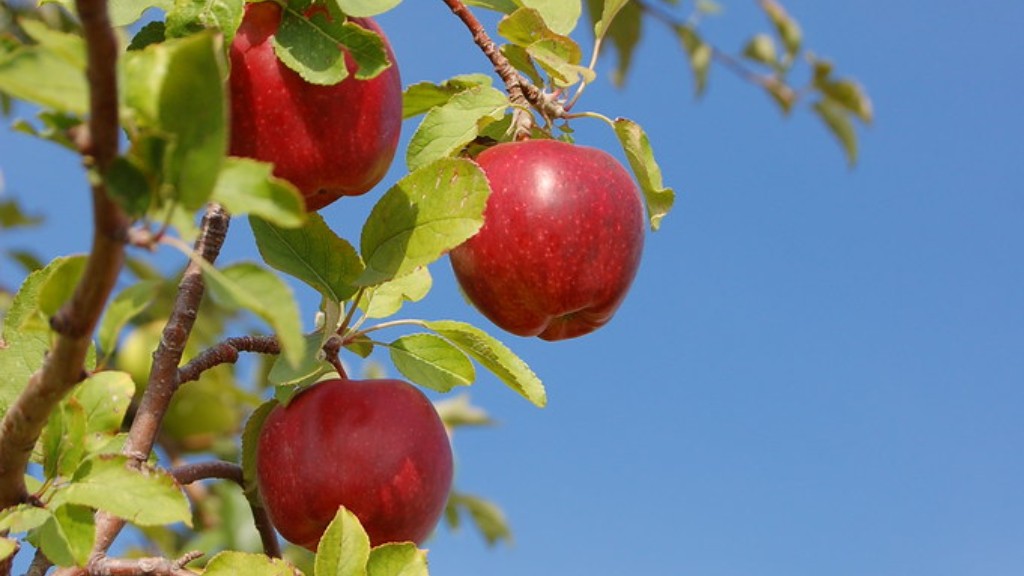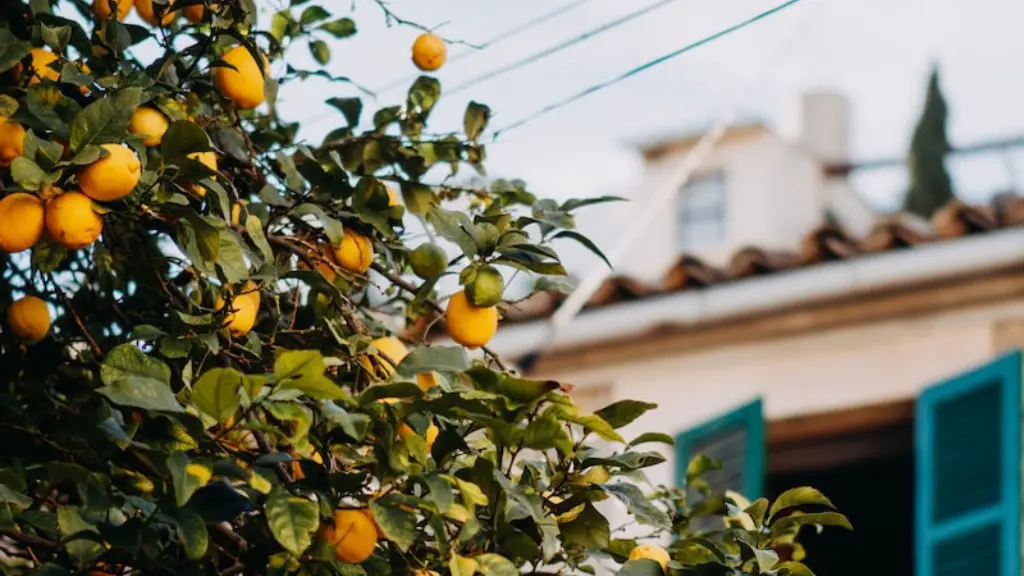Can You Plant an Avocado Pit and Grow a Tree?
Avocado growing, once thought of as something relegated to warm and balmy climates, is now gaining in popularity across the globe. Planting a pit is a fun gardening project and you too may reap the rewards of a thriving avocado tree in your own home. Although it can take time, patience, and plenty of research, you can have success growing an avocado tree from a pit.
The most popular varieties of avocados that you find in the grocery stores are best not planted, as they are usually from the large, widely-distributed, hybrids of Hass and Fuerte avocados. However, if you have access to a wide selection of varieties and want to try growing something a bit more exotic, you may be able to find seeds that would be suitable for planting. As for the pit, if you want to try growing one from the grocery store, it will still be possible but chances of success vary greatly.
When planting your pit, the most important factor to consider is the location. An ideal spot will have rich, loam soil, good drainage, and full sun. If you have this kind of environment, you should have no problem growing an avocado tree. Next, the pit should be planted with the pointed end up and the flat, round end dug into the soil surface. The avocado pit should then be fortified with stakes to keep it in place.
Regular watering is crucial, particularly during the first few weeks and months when the seed is establishing itself. Make sure you move the stakes and turn the seed over on a weekly basis so it does not grow solely in one direction. If you do all of this, the avocado plant should begin to sprout within 6-8 weeks, given the right environment. Under normal conditions the tree will reach full maturity in 5-7 years.
Once the tree has established itself it is important to care for it properly in order to ensure a healthy yield. Regular pruning should be done to encourage new growth and keep the tree from getting too large. You should also trim away any weak or dying branches that could be a harbor for pests or diseases. Put down mulch to protect the soil and keep in moisture. Finally, fertilize your tree with a balanced, organic fertilizer once a year to help it reach its full potential.
Provided you have the right conditions and are willing to put in the time and effort, successful avocado growing is certainly possible. Growing your own avocado tree from a pit may take a long time, but the payoff can be well worth the wait.
Is it Hard to Grow an Avocado Tree?
If you have the ideal conditions for growing an avocado tree in your area and if you do the right amount of research, it is not hard to grow an avocado tree. There are a few things to consider when caring for one, such as need for consistently moist soil, well-draining soil, and good exposure to full sun in order to get a good yield of fruits.
One of the most important factors when growing an avocado tree is climate. It’s best to choose a variety that’s suited to your environment and make sure to plant it in a place where it will get maximum sun exposure. If you are planting a pit, it is important to make sure you pick one from a variety that is suitable for your environment. It can also be beneficial to choose a grafted variety, as this will ensure success in growing.
When planting the pit, make sure to get it deep into the soil so it takes root and supports the tree’s growth. You should also consider adding stakes so the young tree does not tilt, making sure to turn the seed over on a weekly basis. It is important to water regularly and to fertilize the tree with a balanced, organic fertilizer once a year, as this will help it reach its full potential.
To have an avocado tree in your garden can be very rewarding, but it also requires giving the tree the right conditions, proper care, and dedication. Taking the right steps and following these tips should lead to a successful end result and a healthy, strong tree that will reward you with a bountiful crop of avocados.
What are the Benefits of Growing your own Avocado Tree?
Growing your own avocado tree can have many practical and financial benefits, making it well worth the effort. Homegrown avocados often taste better than store-bought varieties as they have had more time to ripen and develop flavor. You also save money on buying avocados from stores. With your own tree, you can pick avocados when they are ready, without having to worry about over-ripe or under-ripe fruits.
Having a tree in a home garden is also an enjoyable project, especially for those who want to give back to the environment. Plus, since avocado trees need very little pruning and water and require no special equipment, they are an easy and cost-effective choice for gardeners. And of course, growing a tree of your own provides the satisfaction of being able to pick that delicious and nourishing fruit, straight off the tree.
Given the right conditions, having a thriving avocado tree in your home garden is a great way to share the avocados with your friends and family. Whether it’s the scent of the flowers in the spring, the changing of the leaves in the summer, the fruit in the fall, or the charm of the gnarled bark in the winter, it is certain that this tree will be a great source of enjoyment and pleasure throughout the year.
Avocado is an excellent source of many essential vitamins, minerals, and antioxidants and it also offers many health benefits. From helping to reduce bad cholesterol, preventing heart disease and stroke, to promoting healthy skin and eyes, there are many potential benefits to growing your own avocado tree.
Growing Tips for a Healthy and Bountiful Avocado Tree
To ensure a healthy avocado tree, there are a few key things to keep in mind. Firstly, it is important to select a high quality, grafted tree for best results. Additionally, make sure the planting site offers full-sun exposure and has well-draining, loamy soil with a pH between 6.0 and 7.5. When planting, dig the pit deep enough so that it can take root and support the tree’s growth.
Water your tree regularly, while also avoiding water-logging, as this can lead to root rot and leaf drop. As your tree grows, it is important to prune off any weak or dying branches to promote new growth, and to keep the tree’s size under control. Mulch the soil to help keep in moisture, and fertilize the tree with a balanced organic fertilizer once a year for optimal health.
In terms of pest control, there are a few methods which can be used in controlling pests from attacking your avocado tree. These include using organic methods such as neem oil and insecticidal soaps, as well as trapping pests with sticky trap cards. Planting companion plants and keeping the area free of weeds and debris can also help in reducing pests.
By following these tips, you should have a healthy and bountiful avocado tree in no time. With a bit of effort and patience, you can prove that growing an avocado tree from a pit in your own garden is not only possible, but very rewarding.
Can You Grow an Avocado Tree Indoors?
From a practical standpoint, it is possible to grow an avocado tree indoors, however, it is not in the best interest of the tree. For best results, avocado trees require full sun, as well as moderate warmth and a consistently moist environment. In a home setting, it will also require consistent and careful pruning which can be difficult for indoor growers.
If you do decide to grow an avocado tree indoors, it is important to not rush the growth process, as such a sudden change in climate can stress the tree out, leading to a delay in fruiting and overall poor tree health. Also, the space in your home will limit the ultimate size of the tree, as it would reach larger proportions in an outdoor environment.
When growing an avocado tree indoors it is also important to have plenty of windows to allow natural light to reach the tree, and to provide extra lighting if necessary. You should also avoid placing the tree in direct drafts from heaters or air conditioners, as such rapid changes in temperature will shock the tree. Additionally, an indoor tree should be watered with tepid, soft water and be kept in an environment with a temperature of around 65°F (18°C) for a consistent growth rate.
Overall, growing an avocado tree indoors will require a dedicated and conscientious effort, as you must ensure all environmental conditions are suitable for healthy tree growth. If managed adequately and cared for properly, an indoor tree can last for several years, however, outdoor conditions are still the best environment in which to grow an avocado tree.
What Varieties of Avocado Exist?
Varieties of avocado can be divided into two categories: Mexican, which are larger, wider, and more heavily skinned, and West Indian, which have thinner, smaller skins, and often have larger seed cavities..
In Mexico, the three most popular varieties are the Fuerte, the Hass, and the Bacon. The Fuerte is a larger variety that has a thin-skinned, green skin and is full of buttery flesh. It has a higher oil content than the other varieties, making it great for guacamole. The Hass, on the other hand, is the most widely harvested variety, with a thick, pebbly, dark green skin, and distinct nutty flavor. The Bacon is known for its low-fat flesh and smooth texture, making it a favorite among health-conscious consumers.
West Indian avocados are often known for their seed cavity size, texture, and color. Varieties such as the Reed, Pinkerton, and Zutano are most commonly grown in California and are known for their thinner skins and higher oil content. The Gem avocado is another variety with thin skin, smooth buttery texture, and a delicate, nutty flavor.
Each variety of avocado offers unique growing and harvesting characteristics that can vary significantly. It is important to find the right variety for your local climate and soil type, as well as your own personal tastes and preferences.
How to Harvest Avocados
When it is time to harvest your avocado crop, it is important to know the best time to pick them and how to do it correctly. The best way to tell if the fruit is ripe is to gently squeeze it. If the avocado yields slightly to gentle pressure, then it is ripe and ready for picking. It is best to pick the avocados when they are still slightly green, as they will continue to ripen at home. The ripe fruit should be a dark green, or even purplish-black as some varieties turn.
When harvesting, use a small knife to cut the fruit from the tree, making sure to leave some of the stem attached. If the stem is pulled, it will cause more damage to the fruit, making the exposed flesh easily infected. Once you have picked the avocado, do not wash it under the tap, as this will damage the fruit. Instead, either wipe it off with a damp cloth, or if you need to clean it more thoroughly, use a soft brush and then pat the fruit dry with a paper towel.
It is important to ensure each avocado is ripe before harvesting, as unripe avocados tend to be sour and may take several weeks to reach full ripeness. Riper fruit will also have a better texture and flavor. Additionally, you should know when to harvest in order to avoid losing your entire crop all at once. By picking the fruit gradually over time, you will ensure a consistent supply of ripe fruit.




